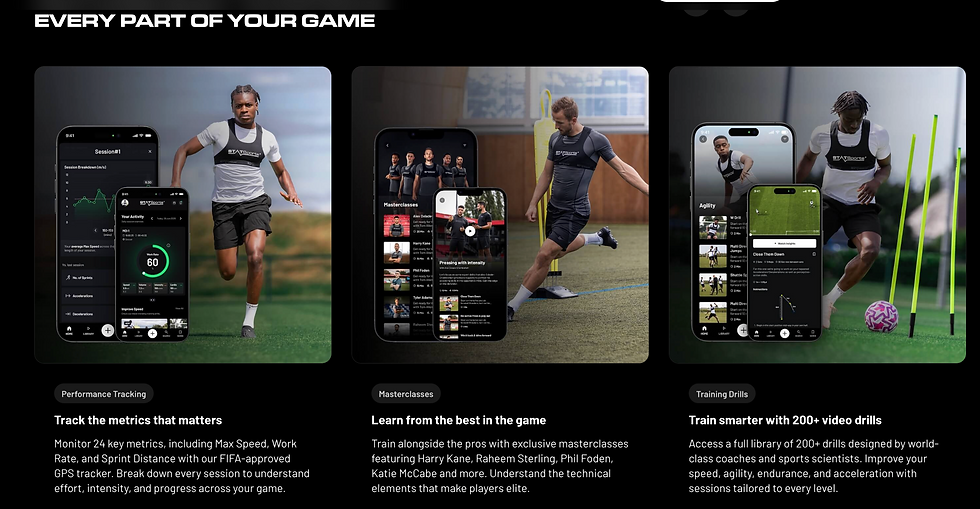Specific Performance gaps between Canadian players and academy players in UK/Europe
- Ian McClurg - MSc Performance Coaching

- Jun 24
- 3 min read
Last Saturday I had the privilege of discussing youth development with an ex-Canadian international player who is currently the U19 academy coach at one of Italy's top academy programs.
He has coached in Canada and has a son who has transitioned from playing in Canada to playing in an academy of a professional club in Italy. He has also provided players from Canada with the opportunity to train at his academy in Italy and potentially train with the club on a full-time basis.
One player went across to Italy last year and initially struggled with the intensity of practice and the high level of tactical knowledge and competitiveness. The player was initially frustrated by not being able to beat and go past defenders anymore. He complained that referees were not calling fouls and his distance covered during games was 50 % of other players in the academy.
Fast forward one year and the player has now been invited to join the academy under a full scholarship. The club are prepared to invest in him and help him achieve his goal of playing professional football in Italy.
That opportunity is open to all Canadian players if they have the ability and mental resilience to overcome the gaps in performance levels that they will initially face.
The performance game metrics of youth soccer players in Canada versus academy players at professional clubs in the UK and Europe differ significantly across several key areas. These differences stem from variations in training intensity, tactical education, physical benchmarks, and competitive environments.

⚽ Key Performance Game Metrics: Comparison
Metric | Canada Youth Soccer Players | UK/Europe Pro Academy Players |
Technical Execution (e.g., Passing Accuracy) | 70–80% in U14–U18 community/rep level | 85–95% in academy U14–U18; lower tolerance for errors |
Ball Touches per Game | 30–50 (often positionally inconsistent) | 60–90+; deliberate, purposeful touches in high-pressure environments |
Decision-Making Speed | 2–3 seconds (often delayed under pressure) | <1–1.5 seconds; trained to scan and act quicker |
Tactical Understanding (Positioning, Off-ball Movement) | Basic to moderate; often coach-led | Advanced; players learn to read patterns, press triggers, rotations |
Physical Output (Distance Covered/Game) | 7–8 km (varies by position and level) | 9–11 km with higher high-speed and sprinting % |
Sprint Count/Game | 10–20 | 30–40+ (especially wingers, fullbacks, forwards) |
Duels Won % | ~40–50% | 60–75%, with emphasis on individual dominance |
Pressing Triggers & Effectiveness | Basic pressing concepts, inconsistently executed | Sophisticated pressing models (e.g., zone pressing, counter-pressing) |
Game Intensity (Ball-in-Play Time) | 45–55 minutes (less intensity, more dead time) | 60–70 minutes active play time; higher tempo, fewer breaks |
Involvement per 90 mins | Lower — players often go long periods uninvolved | High — required to stay engaged in all phases of play |
🎯 Why These Gaps Exist
Training Volume & Environment
Canada: 3–5 sessions/week, mostly team-focused
UK/EU Academies: 6–10+ sessions/week including individual, unit, and tactical sessions
Competition Level
Canadian players often face less consistent and lower-pressure opposition.
Academy players face elite peers weekly and are tracked via GPS, video, and performance analytics.
Coach Education & Infrastructure
UK/Europe coaches often hold UEFA A or Pro Licenses and are embedded in performance ecosystems with sports science, analytics, and psychology support.
Canadian systems are improving but remain behind in depth and consistency.
Mental & Game IQ Training
European academies integrate film review, tactical analysis, and mental preparation from early ages.
📉 Resulting Impact on Game Outcomes
Canadian players struggle with tempo, pressure, and consistency when trialing in European settings.
European academy players are more adaptable, faster decision-makers, and have stronger physical and tactical baselines.
✅ What Canadian Players Can Do to Close the Gap
Engage in individual technical and tactical training (beyond team practices).
Use video analysis tools to improve decision-making and spatial awareness.
Pursue higher-level competition (domestically or abroad) to accelerate adaptation.
Train in periodized programs that replicate academy demands in physical and mental preparation.


